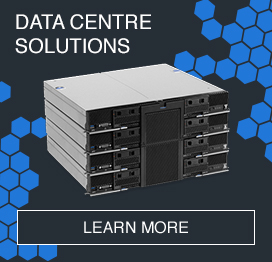A revolution is under way in business and government.
Digital technologies are promising to transform businesses and government departments into agile, dynamic, customer-focused organisations. Yet according to Deloitte’s Tech Trends 2016: Innovating in the digital age, few organisations properly recognise the core role that data plays in digital transformation.
Most organisations are “failing to invest in the dedicated talent, platforms and processes needed to turn information into insights,” according to the Deloitte report. This presents an opportunity for businesses to gain a competitive edge, and a way for government bodies to become more relevant and useful to the people they serve.
Data is raw information that can be analysed for insights that can inform and drive decision-making. For organisations, data can be broken into two types: structured data that resides within relational databases, spreadsheets and other records and files, and unstructured data that is not organised in any predefined manner. Much of the focus on data analysis today is around unstructured data, such as social media posts, instant messages, PowerPoint presentations and collaboration software.
Harnessing the power of data
Some analysts put unstructured data at between 70 per cent and 80 per cent of the overall data usable by organisations. This means businesses and government bodies that put analysing unstructured data in the ‘too hard basket’ risk leaving valuable insights buried and key trends undiscovered.
Lenovo is one business that quickly identified the power of analysing structured and unstructured data to generate usable insights. With SAS, Lenovo was able to use insights obtained by combining analysis of internal data with analysis of unstructured data to identify potential problems early and improve its supply chain, manufacturing and sales and service operations.
For its customers, Lenovo helps infuse a high degree of automation into the data analysis and insight creation process. These architectures, when validated on Lenovo servers, can harness the power of Apache Hadoop to process large datasets across clusters of computers, and accommodate tools such as Cloudera, MapR and IBM BigInsights for data at rest.
Lenovo servers themselves act as the cornerstone of many customers’ data analysis programs by providing scalability to support growth in workloads, rapid transaction processing to support business decision-making, high-throughput capacity for rapid response and optimised systems for faster time to value.
The path to actionable insights
So what approach should businesses and government organisations take to succeed in their use of data analytics? According to the Deloitte report, “some organisations are adopting new governance structures, multi-tiered data usage and management models, and innovative delivery models to enable repeatable results and scale. Indeed, they are treating data analysis as a strategic discipline and investing in industrial-grade analytics.”
To support leading-edge approaches such as these, businesses and government organisations should also select technology partners experienced in delivering highly automated, powerful data analytics systems. These partners should also understand the challenges that businesses face in turning analysis into actionable insights, preferably by having experienced and overcome these issues themselves.
LENOVO SERVERS, POWERED BY INTEL® XEON® PROCESSORS, #1 IN x86 SERVER RELIABILITY
In today's competitive environment business success depends on a reliable infrastructure. Server uptime directly impacts revenue and responsiveness to customers. More companies are demanding 99.99 per cent uptime and many IT managers spend 25 per cent of their time reacting to technical issues (1). Lenovo™ servers, powered by Intel® Xeon® processors, have consistently held the #1 position in TBR's customer satisfaction surveys (2). According to the latest independent ITIC 2015–2016 Global Server Hardware and OS Reliability Survey, Lenovo System x servers also offer best-in-class reliability in the x86 category (3).
- A 79 per cent majority of corporations now require a minimum of 99.99 per cent uptime or better for mission critical hardware, operating systems and main line of business (LOB) applications, up from 67 per cent in 2012–2013 - ITIC Report 2014. IT departments claim to spend 25 per cent of their time reacting to technical issues - Lenovo Commercial Segmentation Study, June 2015.
- According to a TBR analyst report, released in August 2015, Lenovo was rated #1 in all 22 of the evaluated attributes.
- Per the ITIC 2015–2016 Server and OS Reliability Survey, July 2015.















